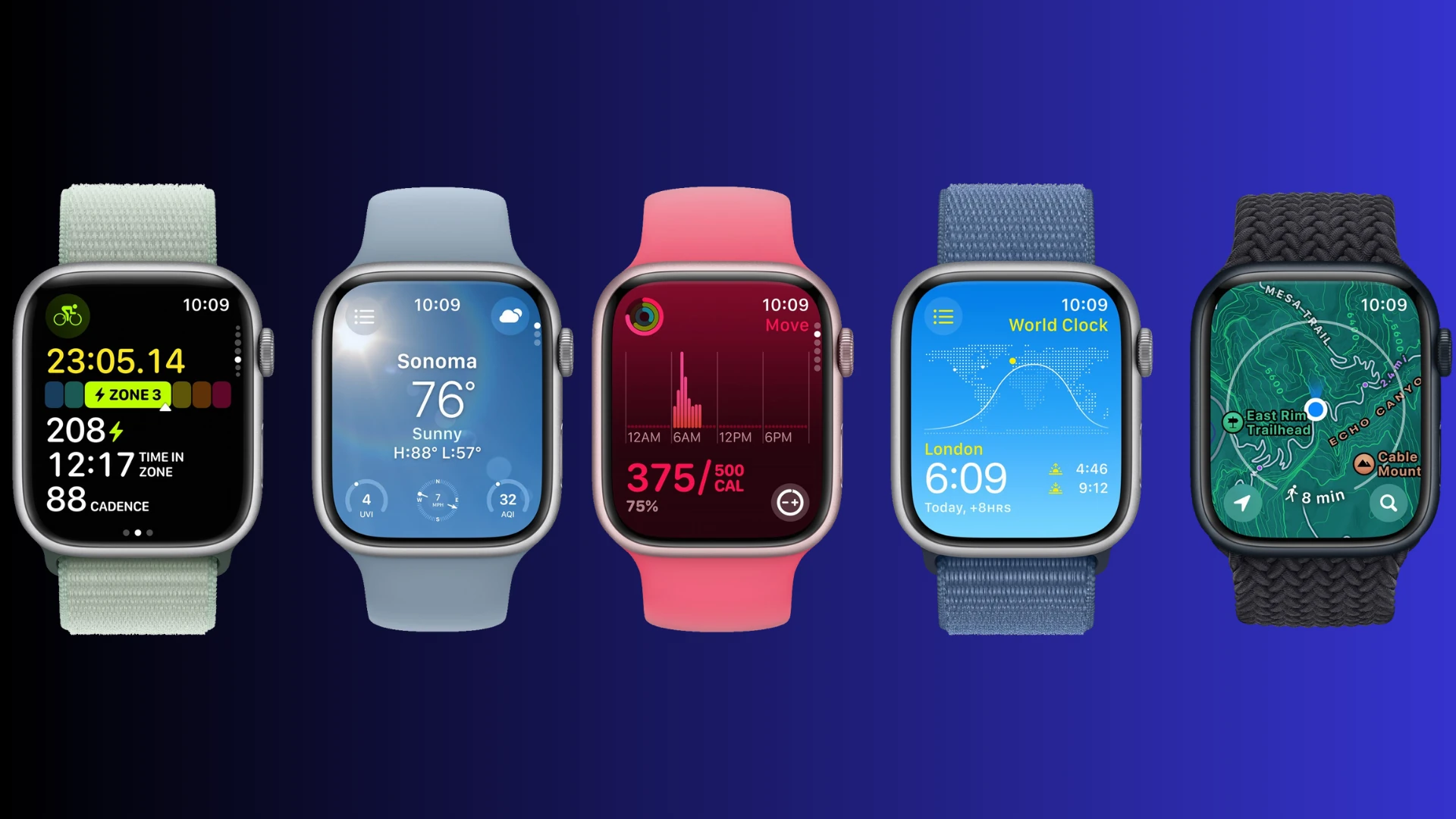So, your kid has been dropping hints (or maybe not-so-subtle pleas) for their very own phone. Maybe it’s their birthday, the holidays, or simply a time for them to have a way to reach you when they’re not home. Whatever the reason, the question remains: What’s the best phone for kids like yours?
Don’t worry; we’ve got you covered. Choosing a phone for your child can feel overwhelming, especially with all the new tech coming out all the time and the sheer number of options out there. In this guide, we’ll break down everything you need to know to make an informed decision, from the latest models and features to safety considerations and parental controls.
And hey, if you’re reading this because your child has been begging for the latest iPhone, don’t worry – we won’t judge. But we will help you figure out if that’s the best choice for your kiddo.
Key Considerations When Choosing the Best Phone for Kids

Photo credit: Troomi
Before we jump into specific phone models, let’s talk about the key factors that should guide your decision:
- Age of Your Child: Younger kids might do well with a simple phone for calls and texts, while older kids might want a smartphone for social media and schoolwork. Consider the maturity level and responsibility of your child when deciding on features.
- Safety Features: Parental controls are a must-have for any phone your child uses. These allow you to limit screen time, block inappropriate content, track location, and monitor their online activity. Make sure the phone you choose has robust parental control options that you can easily manage.
- Durability: Let’s face it, kids aren’t always the most careful with their belongings. Look for a phone that can handle drops, spills, and general wear and tear. A durable case and screen protector are also wise investments.
- Cost: Phones range in price from budget-friendly to eye-wateringly expensive. Set a budget beforehand and stick to it. Consider the cost of the phone itself, as well as any monthly service plans or data charges.
- Features: Does your child need a high-resolution camera for photography, or is a basic camera fine? Do they need a lot of storage for apps and games, or will a smaller amount do? Think about how your child will use the phone and prioritize the features that are most important to them.
By considering these factors, you’ll be well on your way to finding the best phone for your child’s needs and your peace of mind.
What’s the Right Age for a Phone, and What Kind?

Photo credit: Gabb
The million-dollar question! There’s no magic age for when a child is ready for a phone, as it varies depending on maturity, responsibility, and individual needs. However, here’s a general guideline based on expert recommendations and child development research:
- Younger Children (Under 10 years old): For this age group, a basic phone that focuses on calls and texts is ideal. Look for phones with large buttons, a simple interface, and maybe a few fun features like pre-set games or a camera.
- Tweens (10-12 years old): As kids enter the tween years, they may start wanting a smartphone for social media, messaging apps, and games. If you decide they’re ready, choose a phone with robust parental controls that allow you to monitor their activity and limit screen time. Consider starting with a more basic smartphone with limited features and gradually upgrading as your child matures.
- Teenagers (13+): Teenagers will likely want a fully featured smartphone with access to social media, messaging apps, and other popular platforms. Look for phones with strong security features, ample storage for photos and videos, and long battery life to keep up with their active lifestyles. Continue to monitor their usage and have open conversations about online safety and responsible behavior.
Starter Phones for Young Children
Gabb Wireless: The No-Frills Phone for Young Kids
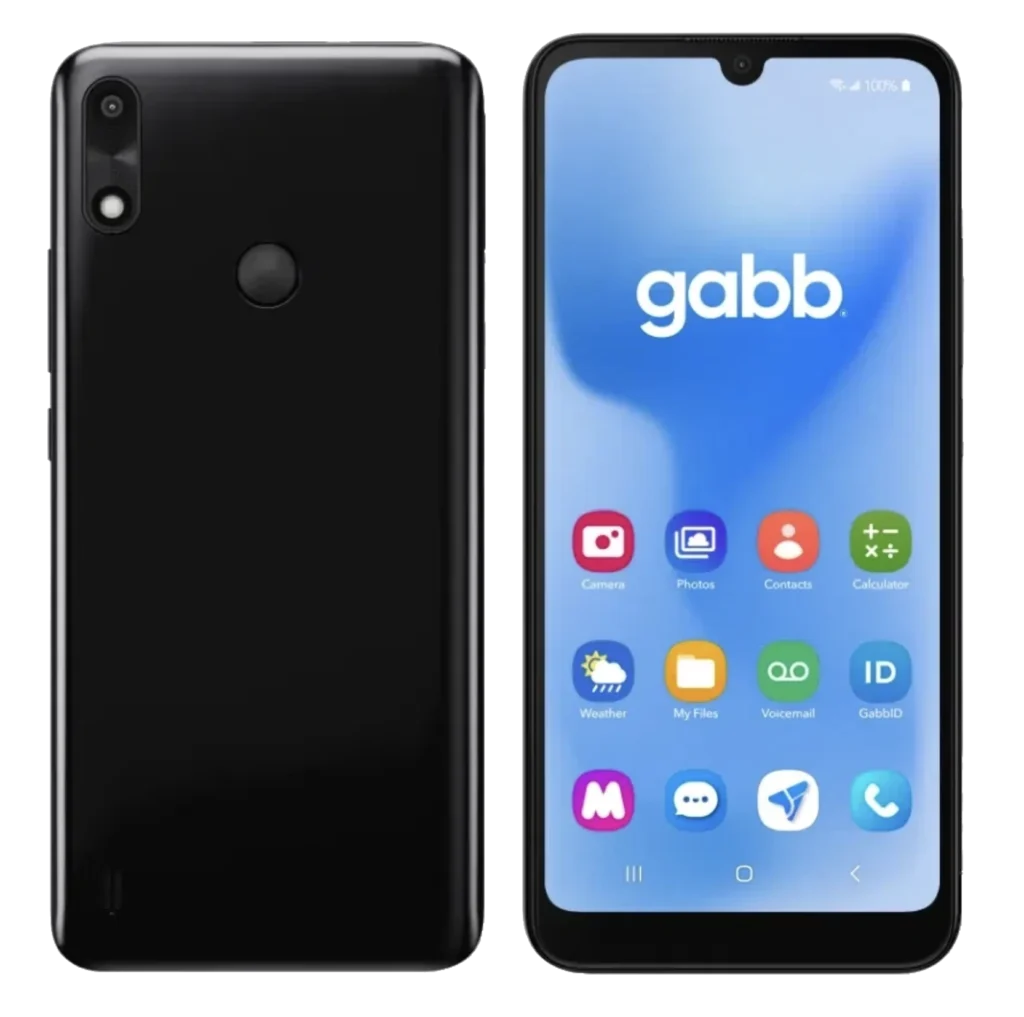
Photo credit: Gabb
Gabb Wireless offers a simple, no-frills phone specifically designed for young children. With no internet access, social media, or app store, it’s a safe way to stay connected without the distractions and potential dangers of smartphones.
Key Features
- Talk and Text: Gabb phones focus on the essentials – calling and texting – making them easy for young kids to use.
- GPS Tracking: The Gabb app lets parents easily track their child’s location, providing peace of mind.
- Customizable Contacts: Parents can control who their child can call and text, ensuring they only communicate with trusted contacts.
- Gabb Guard: This optional subscription service adds extra safety features like contact filtering (allowing only approved numbers to contact your child) and spam call blocking.
- Own Carrier: Gabb operates on its own nationwide network (using Verizon’s towers for coverage) with affordable plans specifically designed for families.
Best For: Younger children who only need a basic phone for communication and safety.
Set It Apart: Gabb’s strict “no internet” policy and focus on essential communication features make it a standout choice for parents concerned about screen time and online safety.
Troomi: The Kid-Safe Smartphone with a Gradual Learning System
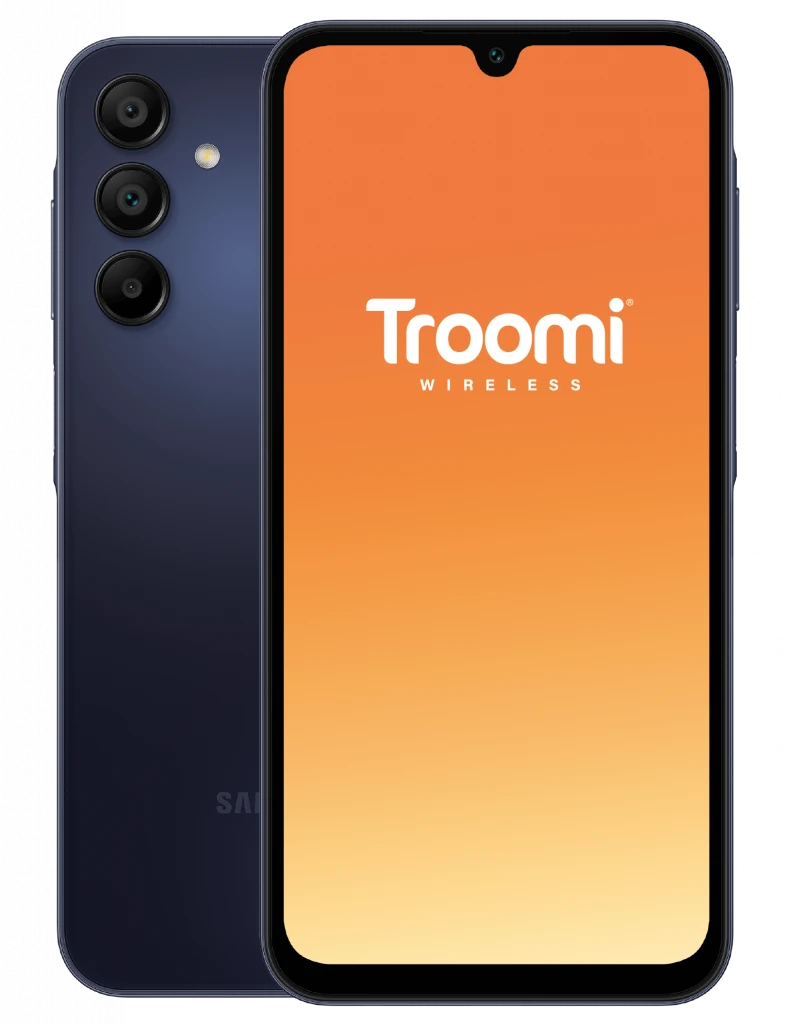
Photo credit: Troomi
Troomi phones are designed with kids’ safety and development in mind. Its custom operating system is based on Android but is heavily modified to prioritize safety and simplicity, with a focus on parental controls and a unique “KidSmart” system. It doesn’t have access to the Google Play Store, ensuring that children are only exposed to curated and approved apps.
Key Features:
- KidSmart System: Troomi’s KidSmart system lets parents gradually unlock new features as their child grows and shows responsible use. This means parents can start with basic features like calling and texting and then add more advanced features such as group messaging, picture messaging, and access to specific apps. This approach helps kids learn to use technology safely and responsibly while giving parents peace of mind.
- Parental Controls: Parents have complete control over their child’s Troomi phone. They can manage contacts, apps, screen time, and internet access. Plus, they can also track their child’s location and monitor their messages.
- KidSmart Safe Browser: This feature allows parents to control internet access for their children. Parents can choose which websites to allow and block all others, creating a safe browsing environment.
- No Social Media: Troomi intentionally excludes social media apps from its platform, aligning with recommendations from health professionals regarding children’s mental health and well-being.
- Content Filtering and Monitoring: Troomi uses AI-powered content filtering to scan text messages and images for potentially harmful content, alerting parents to any red flags.
- Safe Apps and Content: Troomi’s app store only includes apps that have been vetted for safety and appropriateness for children.
- Troomi Wireless: Troomi offers its own affordable wireless plans designed for families, with no contracts or hidden fees.
- Scheduling: Parents can set specific times for their child to use certain apps or features. This helps kids develop healthy screen time habits and ensures that phone use doesn’t get in the way of schoolwork, sleep, or family time.
Best For: Troomi is a great choice for parents looking for a phone that can adapt as their children grow and help them develop healthy tech habits. It’s suitable for kids of all ages, from young children to teens.
Sets It Apart: Troomi’s unique KidSmart system, modified Android OS that allows for greater customization, focus on offline activities, and curated app selection make it a strong contender for parents seeking a safe and educational smartphone for their children.
Pinwheel: The Customizable Smartphone with a Focus on Healthy Tech Habits
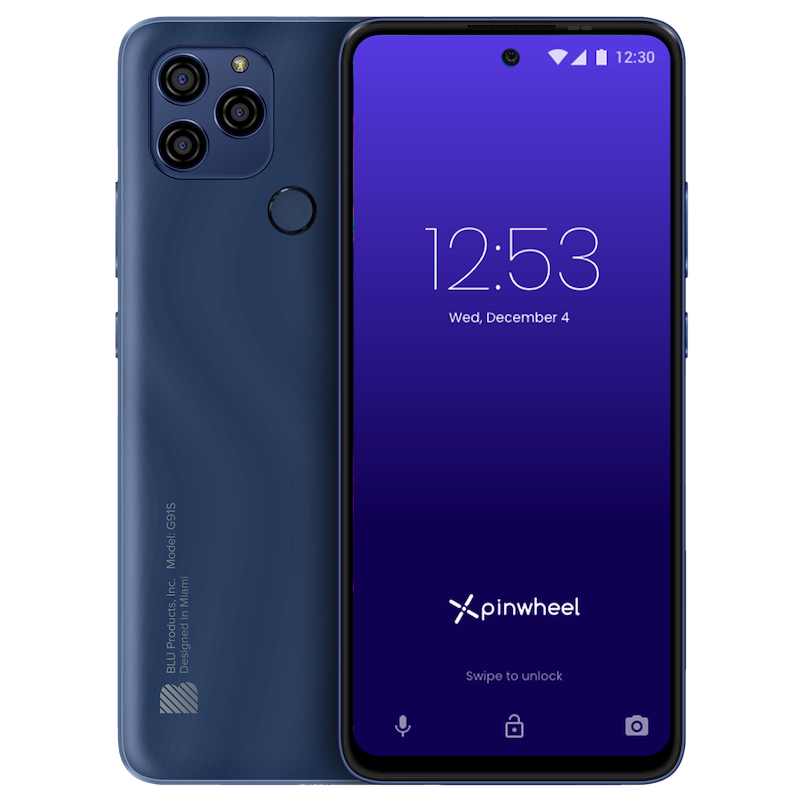
Photo credit: Pinwheel
Pinwheel isn’t just a phone; it’s a system designed to help kids develop healthy tech habits. It offers a highly customizable experience, allowing parents to choose exactly which apps and features their child has access to.
Key Features:
- Caregiver Portal: Parents have complete control over their child’s phone through the Pinwheel Caregiver Portal. They can add or remove apps, set screen time limits, schedule downtime, and even track their child’s location.
- Handpicked Apps: Parents can create their child’s app library, choosing from a wide selection of safe and age-appropriate options. This ensures that kids only have access to apps that align with their family’s values and interests.
- Scheduling: Parents can schedule specific times for their child to access certain apps or features.
- Social Media Access with Parental Oversight: Pinwheel does not include social media apps by default. Parents can choose to enable access to select platforms through the Pinwheel Caregiver Portal. However, these apps are subject to Pinwheel’s robust parental controls, allowing parents to monitor activity, set time limits, and filter content.
- Educational Content: Pinwheel offers a curated selection of educational apps and games, encouraging kids to learn and explore while using their phones.
- Location Tracking and Geofencing: Parents can track their children’s location in real-time and set up geofences to receive alerts if they leave a designated area.
Best For: Parents who want to have strong control over their child’s phone usage, prioritize healthy tech habits, and are open to the idea of allowing limited and supervised access to social media. It’s suitable for kids of all ages because you can customize it to fit their specific needs.
Sets It Apart: Pinwheel’s focus on customization, parental control, and a curated app library with optional social media access sets it apart from other phone options. Parents can create a phone experience that reflects their family’s values and their child’s needs, while also encouraging healthy digital habits.
Smartphones for Tweens and Teens
Apple iPhone SE 3rd Gen (2022): The Affordable iPhone with Familiar Features
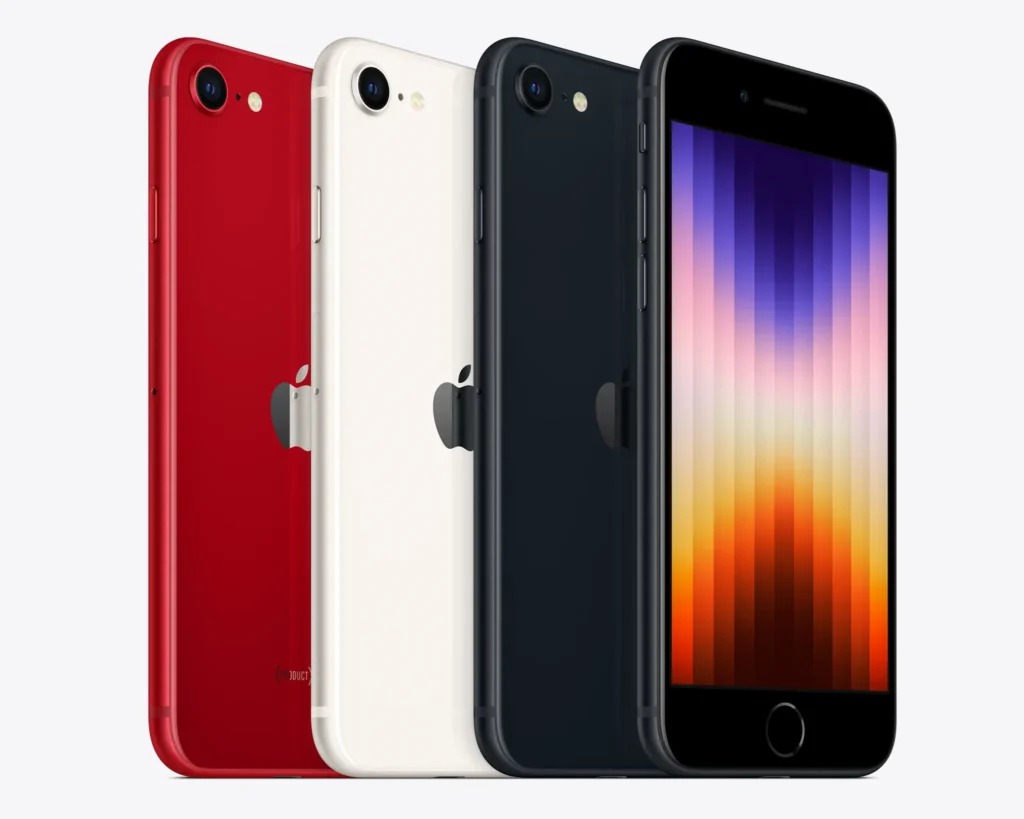
Photo credit: Apple
If your child has their heart set on an iPhone but you’re not ready to splurge on the latest model, the iPhone SE 3rd generation is a solid choice. It offers many of the features and performance capabilities of higher-end iPhones at a more budget-friendly price. Also, parental controls are available through Apple’s Family Sharing feature.
Key Features:
- A15 Bionic Chip: This is the same chip you can find in the much pricier iPhone 13 models, delivering lightning-fast performance for gaming, apps, and everyday tasks.
- 12MP Camera: The iPhone SE’s camera might not have all the bells and whistles of the latest iPhone models, but it still takes excellent photos and videos with vibrant colors and sharp details.
- Compact Design: The 4.7-inch display makes the iPhone SE easy to hold and pocket-friendly, which can be a big plus for younger users with smaller hands.
- Touch ID: The fingerprint sensor provides secure and convenient unlocking and authentication for Apple Pay and other apps.
- Long Battery Life: The SE’s battery can easily last a full day with typical use.
- iOS Ecosystem: The iPhone SE seamlessly integrates with other Apple devices and services, like iCloud, iMessage, and FaceTime, which can be helpful for families who already use Apple products. Your child can access Apple’s app store, which has many educational, creative, and entertaining apps.
- Family Sharing: Apple’s Family Sharing feature allows parents to easily manage their child’s Apple ID, set screen time limits, and approve app downloads.
Best For: Tweens and teens who want an iPhone experience without breaking the bank. It’s also a good choice for parents who are already familiar with Apple’s ecosystem and parental controls.
Set It Apart: The iPhone SE’s affordability, powerful performance, and familiar design make it a popular choice for parents who want a reliable and user-friendly smartphone for their kids. It also holds its resale value well, which is a bonus if you plan to upgrade in the future.
Google Pixel 8a: A Powerful Smartphone with Top-Notch Parental Controls

Photo credit: Google
The Google Pixel 8a is a great option for tweens and teens who want a high-quality smartphone experience without breaking the bank. impressive features, including a top-notch camera system, long battery life, and smooth performance, all while remaining relatively affordable. Plus, it comes with Google Family Link, a comprehensive parental control app for managing app usage, screen time, and content restrictions that gives you peace of mind.
Key Features:
- Google Tensor G3 Chip: This powerful chip really packs a punch, making apps, games, and multitasking run super fast and efficiently.
- Advanced Camera System: The Pixel 8a takes great photos and videos, even in low-light situations, thanks to its dual rear camera setup and advanced image processing software. It’s perfect for capturing those special moments and everyday adventures.
- Long-lasting Battery: The Pixel 8a has a long-lasting battery that can easily keep the phone powered for a full day, even with heavy use. This means your child can stay connected without worrying about the battery running out.
- Google Family Link: This comprehensive parental control app allows you to manage screen time, set content restrictions, approve app downloads, and even track your child’s location.
- Pure Android Experience: The Pixel 8a runs on a clean version of Android without any bloatware, ensuring a smooth and user-friendly experience.
- Regular Updates: Google regularly updates and secures its Pixel phones with software updates and security patches. This ensures the phones have the latest features and protections.
Best For: Tweens and teens who want a high-performing smartphone with excellent camera capabilities and comprehensive parental controls.
Sets It Apart: The Pixel 8a’s exceptional camera, smooth performance, and seamless integration with Google Family Link make it a top choice for parents looking for a safe and versatile smartphone for their kids. It’s also available on various carriers, giving you flexibility in choosing a plan that fits your budget.
If you’d like to learn more about this phone’s specific features and capabilities, you can check out our in-depth review of the Pixel 8a: Pixel 8a: Google’s Best Value Smartphone for 2024?
Samsung Galaxy A54 5G: An Affordable 5G Smartphone with a Vibrant Display
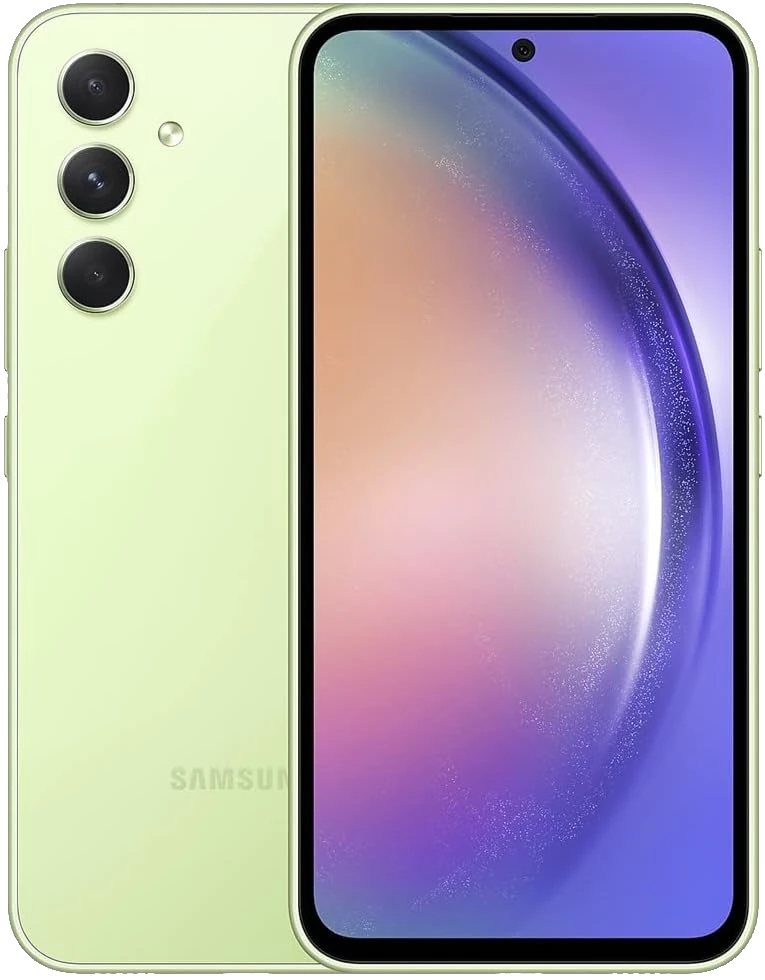
Photo credit: Samsung
For parents looking for a balance of affordability and features, the Samsung Galaxy A54 5G is a solid choice. It offers a bright, vivid display, a long-lasting battery, and a capable camera system, all wrapped up in a sleek design.
Key Features:
- Super AMOLED Display: The Galaxy A54’s display is bright, colorful, and easy to see even in direct sunlight, making it great for watching videos or playing games.
- Long-lasting Battery: This phone can easily last a full day on a single charge, even with moderate to heavy use.
- Versatile Camera System: The A54’s triple-lens camera system takes high-quality photos and videos in various lighting conditions.
- 5G Connectivity: The A54 5G is future-proofed with 5G connectivity, which means faster download and upload speeds, smoother streaming, and less lag when gaming online.
- Samsung Kids Mode: This special mode provides a safe and fun environment for kids, with pre-installed games and educational apps, as well as parental controls for managing screen time and app access.
Best For: Tweens and teens who want a stylish, feature-rich smartphone with a great display and long battery life.
Sets It Apart: The Galaxy A54 5G stands out for its excellent value for money, offering a premium-feeling design and impressive features at a more affordable price point than some other flagship models. It’s also available on various carriers, giving you flexibility in choosing a plan.
Parental Controls and Online Safety: Protecting Your Child in the Digital World

Congratulations! You’ve chosen the perfect phone for your child. Now it’s time to set it up and ensure it’s a safe and positive tool for their digital journey. Here are some essential tips:
- Set Clear Rules and Expectations: Before handing over the phone, establish clear rules and expectations about phone usage, screen time limits, appropriate content, and online behavior. Talk to your child and ensure they understand why it’s important to follow the rules and the consequences of breaking them.
- Activate Parental Controls: Take full advantage of the parental control features available on your chosen phone or through third-party apps. These tools allow you to monitor your child’s activity, limit screen time, block inappropriate content, and track their location.
- Regularly Review Apps and Usage: Stay up-to-date on the apps your child is using and monitor their online activity. Have open conversations about what they’re doing online and who they’re interacting with.
- Teach Online Safety: Educate your child about the potential dangers of the internet, such as cyberbullying, online predators, and inappropriate content. Teach them how to protect their personal information and report any suspicious activity.
- Limit Screen Time: Set reasonable screen time limits to ensure your child has a healthy balance between online and offline activities.
- Be a Role Model: Your children learn by watching you. Be mindful of your own phone usage and demonstrate healthy tech habits. Set aside dedicated time for family activities where phones are put away.
- Stay Informed: Technology constantly evolves, so keep up with the latest tech trends and be aware of potential risks. Regularly review and update your child’s phone settings and parental controls as needed.
By following these tips, you can create a safe and positive digital environment for your child, where they can learn, explore, and connect with others responsibly. Remember, parental controls are just one tool in your online safety toolkit. The most effective way to protect your child is through open communication, trust, and guidance.
Making the Right Choice: A Phone That Grows with Your Child
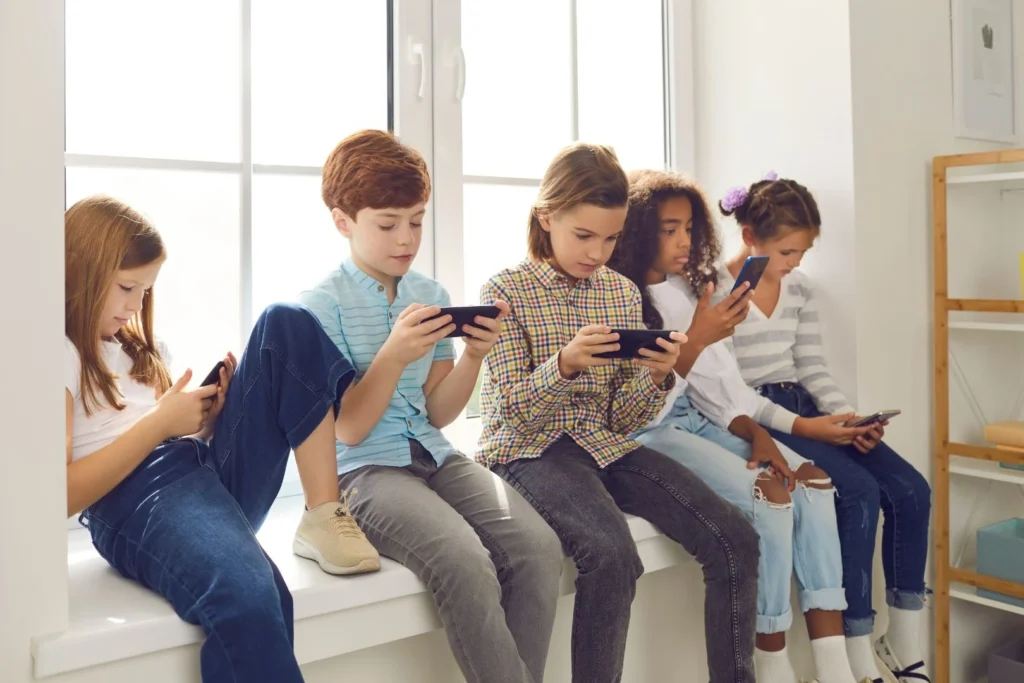
Choosing the best phone for kids is a personal decision that depends on your child’s age, maturity level, and individual needs. Whether you choose a basic phone for calls and texts or a smartphone with parental controls, the most crucial thing is to make sure your kid’s digital space is safe and positive.
Remember, a phone is just a tool. It’s up to you, as a parent, to guide your child in using it responsibly and to foster healthy tech habits that will serve them well throughout their lives.
We hope this guide has helped you navigate the world of kids’ phones and find the perfect device for your family.
FAQs
What age is appropriate for a child to get their first phone?
There’s no one-size-fits-all answer, as it depends on your child’s maturity, responsibility level, and individual needs. Generally, 5-8 years old is a good age for a basic phone, 9-12 for a smartphone with strict parental controls, and 13+ for a more advanced smartphone with appropriate supervision.
What are the best parental control apps for kids’ phones?
Most smartphones come with built-in parental controls (like Apple’s Family Sharing or Google Family Link), but you can also find third-party apps like Bark, Norton Family, or Qustodio for additional features and flexibility.



